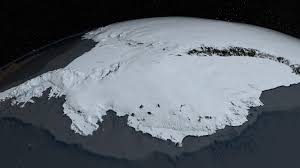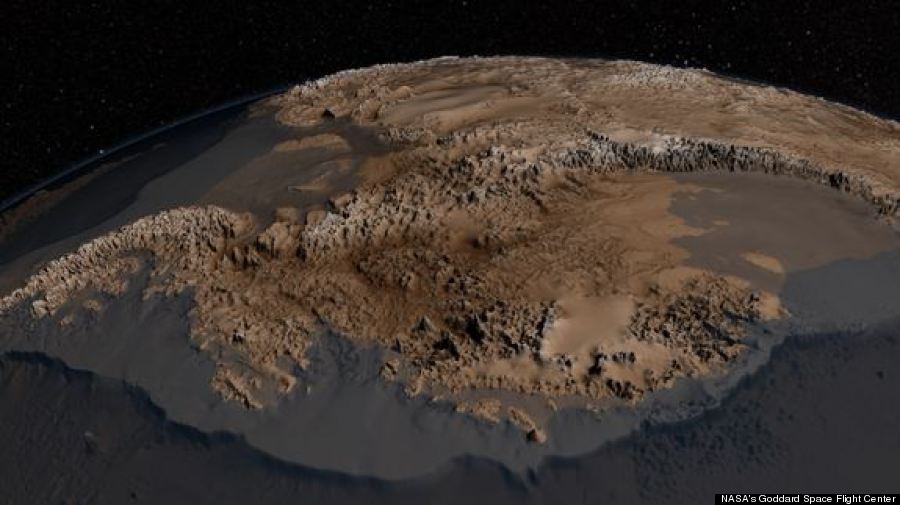
Antarctica consists of two sections, East Antarctica and West Antarctica, separated by the Trans-Antarctic Mountasins. West Antarctica includes the Antarctic Peninsula and the Ronne and Ross Ice shelves. Beneath the ice, it consists of a number of islands. East Antarctica, on the other hand, is larger and the ice sheet sits mainly on land, consisting of mountains, valleys and plains.


Ice covers almost 100% of the continent and exposed rock only makes up about 0.2%. Most of this rock occurs in the Antarctic Peninsula and the Transantarctic Mountains but there are patches of it along the coast as well and in the Antarctic oases.
The ice covering Antarctica is over 4 km deep at its thickest point. Snow has fallen for hundreds of thousands of years and, through compression, formed ice which gradually built up to form a dome-shaped ice sheet over the continent. This ice is fluid, in that it moves, in the form of thousands of glaciers, very slowly towards the coast.
When these glaciers reach the coast large chunks break off to form icebergs, some of which can be as big as Manhattan, though most are smaller, in the vicinity of hundreds of metres to several kilometres.
The most significant ice-free areas include the Bunger Hills 950 km2 (370 sq mi), the Vestfold Hills (420 km2 -160 sq miles), the McMurdo Dry valleys (4,900 km2-1,900 sq mi)and the Schirmacher Oasis (34 km2 -13 sq mi) and there are others. They are generally called oases.
The highest point is the Vinson Massif at 5140 m above sea-level but due to the thickness of the ice, only the highest Antarctic mountains can be seen above the icecap.
The Southern Ocean surrounds Antarctica and consists of the southernmost parts of the Atlantic, Indian and Pacific Oceans. In winter the sea surrounding Antarctica freezes and expands Antarctica to almost twice its size. This ice will eventually break up and form pack-ice which is in constant movement and often encountered by ships heading to the far south (see video below showing sea ice expansion).
Antarctica proper sits above 66°S latitude (it varies slightly each year) and below this, between 46°S and 60°S lies the area known as the sub-Antarctic, which contains many small islands, hosting a variety of wildlife and limited vegetation.
